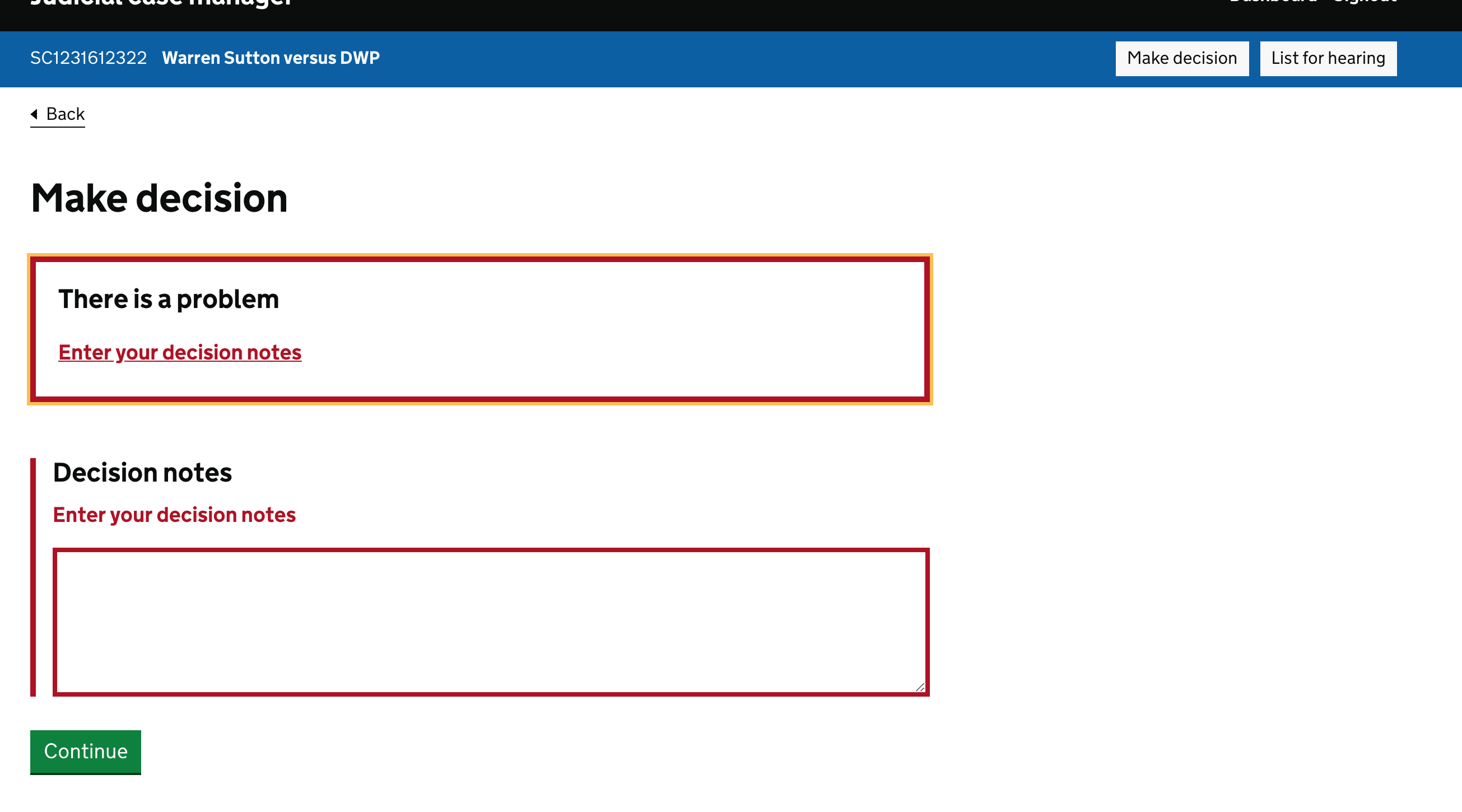It would be good to have a consistent heading in the summary.
"There is a problem" has tested well with users.
The "Optional description of the errors and how to correct them" does not add any value to the screen. It does not provide context or help describe what has gone wrong. The heading does the first and the error does the second.













Use this issue to discuss this component in the GOV.UK Design System.